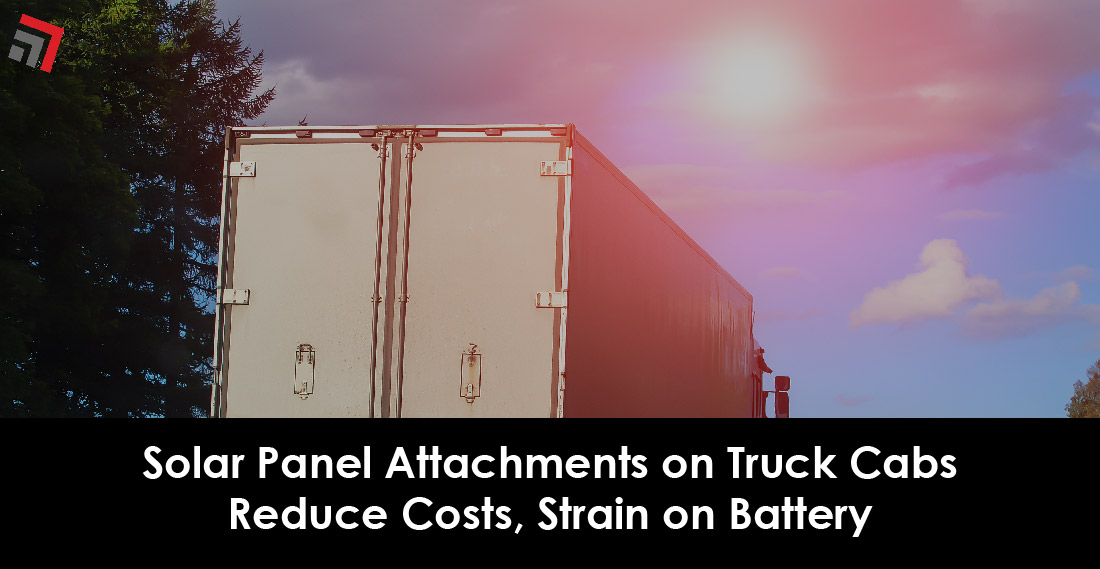At first glance, following a slow 2023, trucking companies may seem less willing to adopt newer, greener, technologies into their fleets. While freight volumes look to recover this year, these companies remain concerned about operating costs eating away at their sensitive margins. Typically, in times of lower demand, the priority of businesses is simply make ends meet and turn a profit. Novel innovations are put on the backburner, tucked away until the market grants enough cushion to experiment with ambitious investment.
Well, at least that has been what it is typical. However, some trucking companies have found a greener way that ironically is reducing costs.
Solar energy reduce costs, lessens burden on truck battery
Trucking companies have harnessed the power of solar energy, a clean and sustainable source that has also cut operating costs. The application is rather straightforward—a solar panel is attached on the roof of a truck cab where the equipment captures the sun’s energy and stores it in the battery bank of the vehicle’s electric power unit (EPU). The storage of solar energy reduces fuel costs by minimizing time spent idling.
The panel attachments can also supply auxiliary power to sleeper cabs, a compartment attached behind the cab for long-haul truck drivers. The power can be used towards functions, like air conditioning, in sleepers throughout the night or during long waits at delivery docks.
The solar panels weigh less than 20 pounds and are propped on truck roofs with an adhesive.
The supplementary energy source helps lessen the toll on a truck’s EPU battery system that comes from the use of in-cab heat and cooling as well as the use of any small appliances or electronics that are onboard a vehicle, like refrigerators, microwaves, or televisions. Without the panels, trucks typically will automatically start twice a night for two hours at a time to refresh the battery system. That said, the panels act as a buffer, providing energy to these features that otherwise would drain the truck’s EPU.
A representative with a dry van carrier told FreightWaves that the technology will save their company roughly $1,700 per truck per year. While this amount is nearly the same as the installation cost of a solar panel on a truck, it does not factor in the benefit of prolonging the lifespan of the vehicle’s battery.
Additionally, the panels minimize the risk of dead batteries. In the long-haul line of work, having to jump-start a dead battery can be a costly affair, especially if it occurs in a remote location.
Final Thoughts
MerlinSolar is the developer of these solar panels. The company says the panels triple the average 18-month lifetime of truck’s EPU battery systems.
MerlinSolar has also entertained using the technology on electric commercial trucks as, if applied, the vehicles’ primary batteries (used to propel the vehicle) would no longer have to power other features, like air conditioning, telematics, and other functions. In theory, this could be a solution to quelling stakeholders’ anxieties over long-haul battery-electric powered trucks as the propulsion battery may not have to be tethered to supplying energy to these other areas of need.
Contact one of our team members if you have any questions regarding this topic or any others in domestic logistics.
More blogs similar to this:



Recent Comments